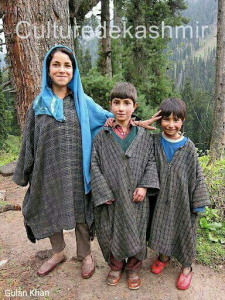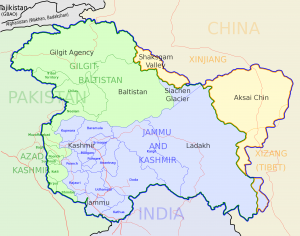
WHO ARE THE KASHMIRIS?
The people of Kashmir – their ethnic origins, culture, and language is unique. The Kashmiri language is distinct from all regional linguistic classes and many reputable scholars do not classify it as Indo-European. Ethnically, the Kashmiri people are a fascinating fusion of the original, early Semitic/Jewish tribes, and, then later by Greeks, Central Asians, Persians, Afghans and Turks, amongst others. All who traversed the majestic mountain passes, over the preceding centuries, to inhabit this beloved space. For over a millennium, the inhabitants of the Vale of Kashmir were Buddhist – not Hindu, as has been wrongly asserted by Hindutva propagandists. Nevertheless, a Brahman class existed in Kashmir that developed a distinct Shaivite religious tradition. Consequently, ‘Kashmir’ became home to these three distinct religious communities – the Muslims, Buddhists and Brahmans – later to be described as Pandits by the Moghul Rulers. Collectively though, Islam is the faith of over 95% of the indigenous Kashmiri people. Still, let there be no mistake, Kashmiri people are innately pluralistic, cosmopolitan and tolerant. Yet, they are a people with their own sense of past, present and future; of purpose, belonging and destiny. Who, even with their own significant internal diversity, have never been tied to prevalent Indian conceptions of self and society. Kashmir is not a part of India, and has never been.
 DEMOGRAPHICS OF KASHMIR
DEMOGRAPHICS OF KASHMIR
What is commonly referred to as ‘Kashmir’ has become a convenient, but often misleading, short-hand for the 5 distinct regions of the erstwhile 1947 Princely State of Jammu and Kashmir. Part of the problem in understanding this dispute is that Kashmir/Kashmiri may refer to either a specific people – the largest, but not only, ethnic group in the disputed territory, or every citizen of the disputed territory regardless of ethnicity.
Collectively, the 5 regions are divided into Indian Administered Kashmir, which consists of three areas: 1) the Valley of Kashmir (15,948 km2) with a population of 8 million people – the heart of Kashmiri culture, language and the focal point of the uprising against Indian hegemony; 2) Jammu (26,293 km2) with a mixed ethnic population of 5,350,811 people comprising of Kashmiri Muslims, including Bakerwal Muslims and Gujjar Muslims, Kashmiri Pandits, Dogra Hindu and Sikhs, Punjabi Sikh, Hindu and Muslim, and an unregistered, sizeable minority of Indian citizens who migrated there; and 3) Ladakh (59,146 km2) with a small population of 274,289 that is divided between Buddhists, Kashmiri Muslims – including Bakerwal & Gujjar Muslims, and tiny population of Indian Hindus. On the other hand, Pakistan Administered Kashmir is nearly entirely Muslim and includes two areas: 1) Azad Kashmir (13,297 km²) with population of 4.6 million; and 2) Gilgit-Baltistan (72,971 km2) with a population of 1.8 million. Together, this amounts to a total population of approximately 20 million people, 86% of who are Muslim.



